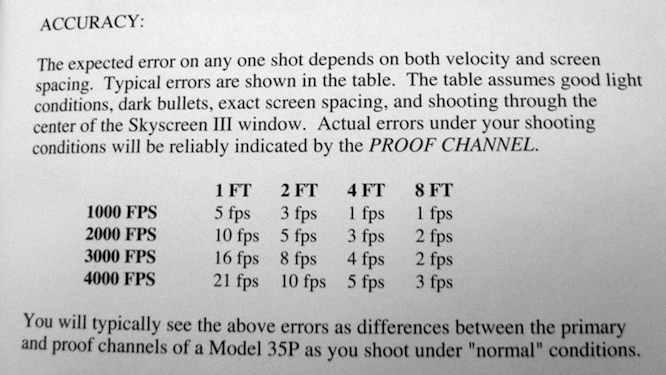SD is a statistical function and the more shots over it result in better SD numbers due to a larger sample size.
The chronographs I have used have a .5% - 1% accuracy range. At 3,000 fps this is a range of 15 fps at .5% or 30 fps at 1% error.
At 1%, a recorded shot of 3000 could be from 2970 to 3030 and the next shot recorded at 3060 could be from 3030 to 3090. Due to the accuracy of the chrono, they could really be the same speed at 3030. We can reduce weather conditions by proper setup of the chrono, but if the accuracy range is .5%-1% that still leaves a pretty large gap in velocities. In the meanwhile, we are fretting over getting an SD of less than 10.
Chrono's are the best tool we have but they are not perfect.
I'm guessing shooters are not further proofing by running larger strings, say 25 shots, for verification.
How much faith do you put in the chrono SD or ES numbers without shooting a larger sample (25?) over the chrono?
The chronographs I have used have a .5% - 1% accuracy range. At 3,000 fps this is a range of 15 fps at .5% or 30 fps at 1% error.
At 1%, a recorded shot of 3000 could be from 2970 to 3030 and the next shot recorded at 3060 could be from 3030 to 3090. Due to the accuracy of the chrono, they could really be the same speed at 3030. We can reduce weather conditions by proper setup of the chrono, but if the accuracy range is .5%-1% that still leaves a pretty large gap in velocities. In the meanwhile, we are fretting over getting an SD of less than 10.
Chrono's are the best tool we have but they are not perfect.
I'm guessing shooters are not further proofing by running larger strings, say 25 shots, for verification.
How much faith do you put in the chrono SD or ES numbers without shooting a larger sample (25?) over the chrono?





